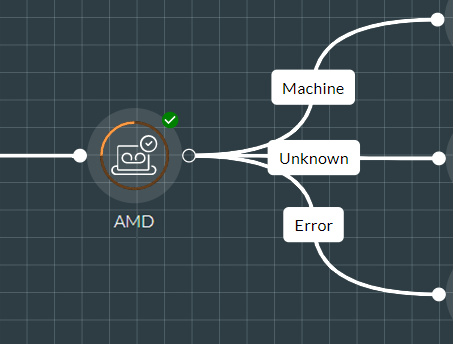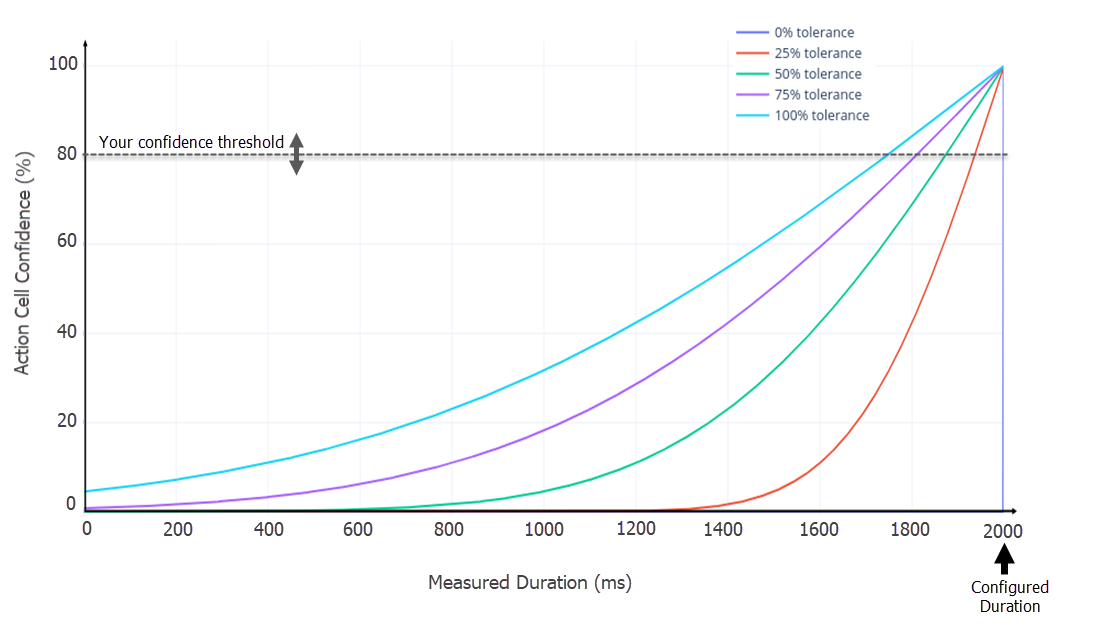AMD
|
Answering Machine Detection. Checks if the connected party in a call generated in a storm OUTBOUND dialler campaign is likely to be an answering machine and then branches accordingly. |
Note: you should use this action cell only if legislation in your region permits the use of AMD.

Note: the action cell is available to OUTBOUND scripts only. However, it is not compatible with scheduled callbacks and for OUTBOUND dial campaigns of type 'Preview'. If scheduled callbacks or preview dial calls are likely to enter your script, you should modify it to bypass all instances of this action cell.
The action cell is based on the idea that answering machines are characterised by longer initial silence and speech durations than seen on calls answered by humans. You can configure the action cell to examine either the initial silence, or the speech duration, or both on the outbound call.
If the silence or speech duration of the connected outbound call matches the action cell's configured duration setting, then the connected call is deemed to be an answering machine. However, if you think that a duration below the configured duration might also indicate an answering machine, you can apply a percentage tolerance to the duration. The action cell then uses this to calculate a confidence value. This value indicates how confident the action cell is that the outbound call's silence or speech duration is that of an answering machine.
The illustration below shows the distribution of confidence values for measured initial silence durations leading up to a configured initial silence duration of 2000 milliseconds. The graphs show that for any non-zero tolerance setting, the action cell's confidence is initially low but gradually builds up as the measured duration approaches the configured value (eventually reaching 100% when the configured duration of 2000 milliseconds is met). The higher the tolerance (that is, your willingness to accept that values further below the configured duration may indicate answering machine), the further away from the configured duration a degree of confidence is built.
Note: if you are using both the initial silence duration and the speech duration to detect an answering machine, the action cell calculates an overall confidence value based on the average of the two durations.

As the cell's confidence level builds up, you can decide at which level to assume that the connected party is an answering machine. You do this by setting a confidence threshold (between 0 and 100). For example, setting a threshold of 80% means that you want to consider the connected party to be an answering machine when the cell yields an 80% confidence value. This will be at a particular duration away from the configured value and even further away for a higher tolerance setting.
Note: the action cell does not take factors such as ambient noise into consideration.
Properties
AMD Section
|
Option |
Description |
|
Overall Timeout |
Set the duration (in milliseconds) in which you expect the action cell to have determined whether or not the connected party is an answering machine. If the timeout is reached, the confidence will be calculated and execution will proceed along the exit point determined by the confidence threshold. You can specify a value between 0 and 10 seconds in 1 millisecond increments. |
|
Confidence Threshold |
The action cell's confidence level at which execution will proceed along the Machine exit point. If the action cell does not reach this level of confidence, then execution will always proceed along the Unknown route. |
Advanced Section
Use this section to configure one or both of the initial silence and greeting duration properties.
|
Exit Point |
Description |
|
Use Initial Silence/ Silence Duration/ Silence Duration Tolerance |
Leave the Use Initial Silence check box selected if you want the action cell to take initial silence into consideration when determining whether or not the call is connected to an answering machine; otherwise clear the check box, in which case routing will be based entirely on the speech duration. Silence Duration. (Default = 2000 milliseconds.) This is the millisecond initial silence duration that indicates an answering machine assuming that the Silence Duration Tolerance remains at its default setting of 0. You can specify a value between 0 and 10 seconds in 1 millisecond increments. Increase the tolerance only if you expect durations of less than the configured duration to point to an answering machine. |
|
Use Greeting Duration/ Greeting Duration Greeting Duration Tolerance |
Leave the Use Greeting Duration check box selected if you want the action cell to take the speech duration into consideration when determining whether or not the call is connected to an answering machine; otherwise clear the check box, in which case routing will be based entirely on the initial silence duration. Silence Duration. (Default = 2500 milliseconds.) This is the millisecond speech duration that indicates an answering machine assuming that the Greeting Duration Tolerance remains at its default setting of 0. You can specify a value between 0 and 10 seconds in 1 millisecond increments. Increase the tolerance only if you expect durations of less than the configured duration to point to an answering machine. |
Exit Points
|
Exit Point |
Description |
|
Machine |
This is taken if the action cell identified the connected party as an answering machine based on the configured properties. |
|
Unknown |
This is taken if the action cell did not identify the connected party as an answering machine based on the configured properties. It is possible that the connected party was either an answering machine or a human. |
|
Error |
This is taken if there is an internal error. |